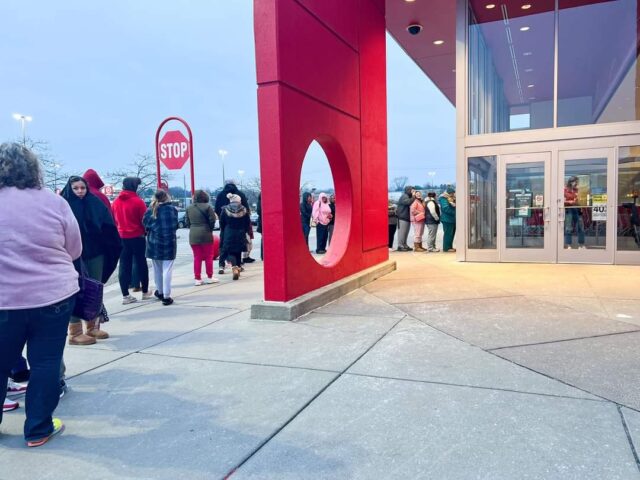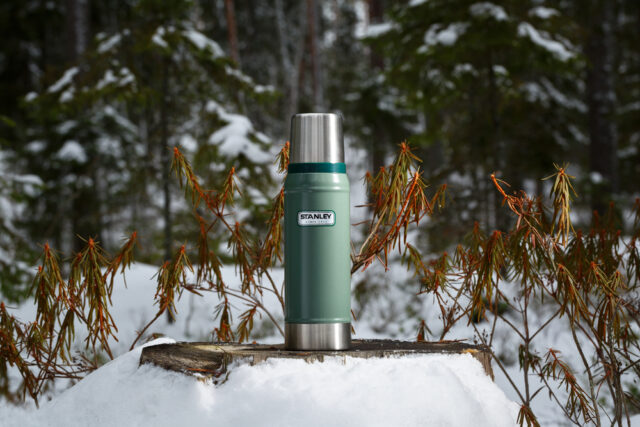
Last week, my 18-year-old son brought home a tall dark green thermos from a thrift store. It looked like a thermos that might have been used by one of those workers you see in pictures that sat without a harness while constructing the Empire State Building. The name “Clarence” was etched in black Sharpie around the rim, and although you can buy a new version of this very vessel on Amazon, this one was clearly from “back in the day”. He paid 15 bucks for someone’s old lunch thermos.
Just a few weeks ago, I was served a post by The Krazy Coupon Lady on Facebook showing a picture of a line wrapped around a Target store, full of women waiting in line for a limited-edition cup made by the same company that created the thermos my son bought at the thrift store. It was pink, available exclusively at Starbucks, and was being sold for $49.95.

Customers waiting in line to purchase a limited edition pink Stanley Starbucks cup at Target (Photo credit: The Krazy Coupon Lady)
Both products were made by Stanley, a company founded 111 years ago.
As recently as four years ago, sales of Stanley’s signature thermos, the same version of the super durable product my grandfather brought to the office and I brought to summer camp, had declined to the point of extinction. The company pulled the product from shelves in 2019.

The Stanley Classic Wide Mouth Bottle (Photo Credit: Michaelvbg/Shutterstock)
It’s not like Stanley didn’t have positive images. At its core, the company was always known for making a great, lasting product. But it was old, traditional, and lacked relevance among younger consumers. And when a brand (or an industry) is facing that kind of challenge, it can choose two paths.
- Complain that the world is changing around it, that competitive pressures are too great, and be satisfied with whatever crumbs are left;
- Change the perception, while maintaining the integrity of what makes the brand great.
The line at Target is one of many indicators that Stanley obviously chose the latter path.
Stanley recognized through consumer feedback that while women loved the durability of the Stanley thermos, the style wasn’t exactly what they were looking for. The company reached beyond its original target demographic. What if they offered the cups in pink? What if they were for activities other than camping?
What if they paid attention to users on TikTok who loved the brand and used it to their advantage? What if they created limited edition “events” to fire up demand? What if they found influencers to spread the word for them?
The Stanley company, founded by William Stanley, Jr. in 1913 in Great Barrington, Massachusetts, went from $70 million in sales in 2019 to $750 million in sales in 2023.
How your brand approaches its audience today is not necessarily how it will (or perhaps should) approach it tomorrow. With the proper strategic tools and mindset and putting the customer first, the future of your brand is not yet written.

Pingback: Rugged Meets Relevant: How Stanley Nailed Its Brand Evolution | MadeBrave®